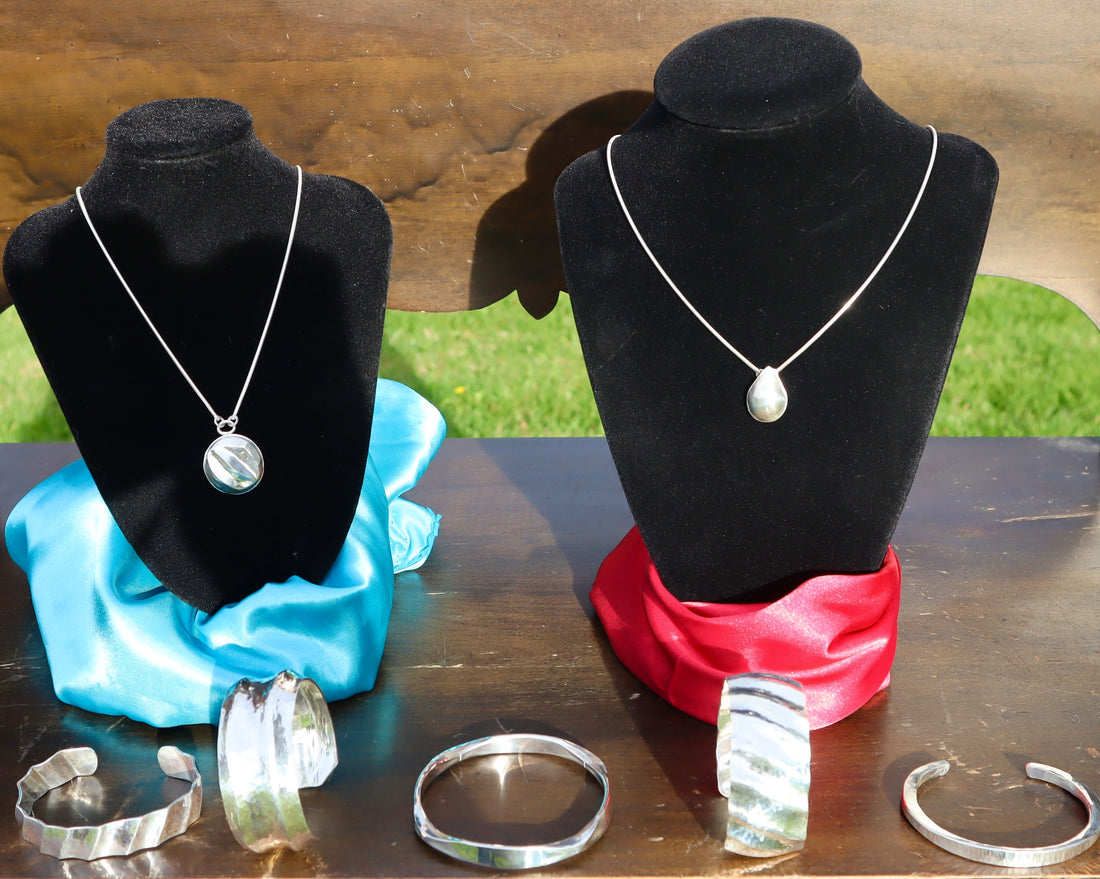When you are shopping for jewelry, do you think about what the price of a piece represents? Do you understand the materials listed in the product description? You should. By the end of this article, you will be able to answer the question- "What is sterling silver made of?" You will also be armed with the knowledge to really understand some of the vague, or misleading terms used in jewelry production.
Part of the value of a piece of jewelry comes from the process that was used to form it. Is it handmade or mass-produced? Is it a one-of-a-kind piece of jewelry, or is it just one of millions?
There are many techniques and materials used in jewelry-making. A pair of earrings may look like they’re made of sterling silver, but are they??? The materials used should be clearly stated, and easy for anyone to understand when you’re shopping for a ring, necklace, or earrings. Some commonly used terms are sterling silver, silver plated, silver and gold electroplate, fine silver, or pure silver. Each term does contain the word silver, but the amounts vary from 100% silver to containing almost no silver at all. It may be difficult to tell by looking, so here is a quick explanation of silver-related terms for jewelry lovers.
Pure silver and fine silver- are the same thing. This means that it is 100% silver, with no other metal added in. Pure silver is too soft to be used for jewelry in many cases- unless you use a rigorous shaping process that makes it strong. I use a thick sheet of pure silver in these bracelets because the repeated courses of hammering make the finished bracelet into a durable final form.
Genuine sterling silver has a purity of .925%, and is often identified by a stamp of .925. This means that 92.5% of the metal is silver, and a small amount of copper has been melted into the silver to make up the other 7.5%. The copper makes the silver stronger, and more durable for daily wear. But, as you will have noticed, sterling silver is still mostly made of silver. Look for the stamp .925 if you want to ensure you are buying the real deal. But remember- sterling silver is prone to tarnish if it is left unworn in the open air for too long. I have another fascinating blog post here that tells you all about how to care for your handmade jewelry.
Silver electroplate, or silver and gold electroplate, or silver over brass- Your interest in shiny things may have been satisfied by reading the words silver and gold. But electroplate or electroplated is the important term to recognize here because it means there's barely any silver in the piece of jewelry. Electroplating is a process by which a thin surface layer of silver- (or gold) is applied to a piece of jewelry by submerging it in an electrolyte solution. The process makes the jewelry look like it's sterling silver but is actually mostly made of brass or nickel- (or whatever they use.)
An important note regarding the information on the electroplating process that I have just provided. I am not an expert. I have never had any interest in the process. And I have never, and will never use it in my work. There are several important reasons for this...
1. I am not a big business, selling huge numbers of replicated designs, and looking to cut corners on material costs. 2. As I handmake every piece I sell, I want the quality of materials to match the amount of time that I put into each piece. I couldn’t imagine selling jewelry that is only silver on the very surface. Maybe you can't really tell by looking, but what’s on the inside counts to me.. I will never compromise on materials.
And I hope you won’t compromise the next time you decide to buy yourself a piece of jewelry. You’re the real deal. And you’re worth genuine sterling silver, or pure silver, or gold...
Thanks for stopping by!
deva

